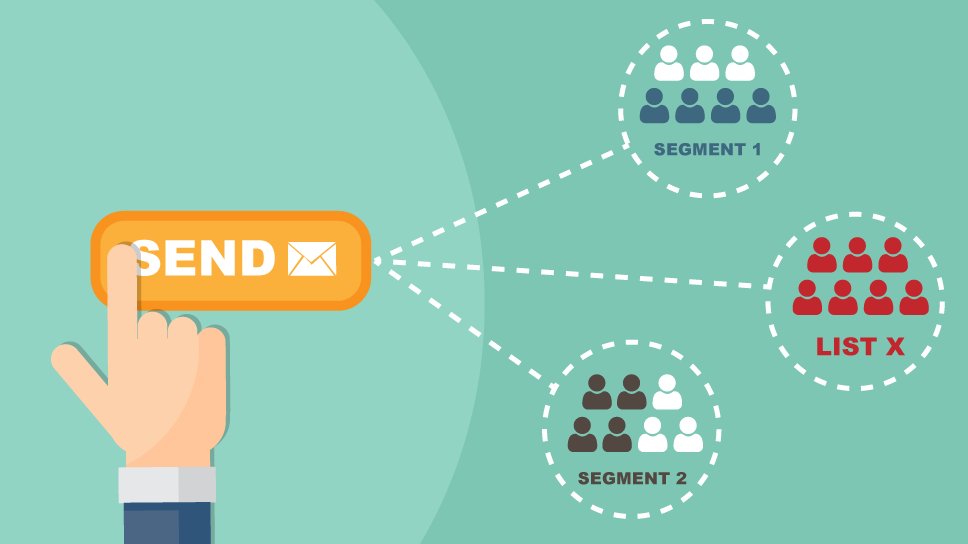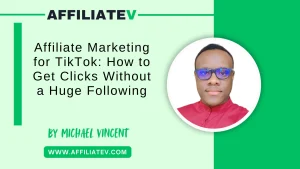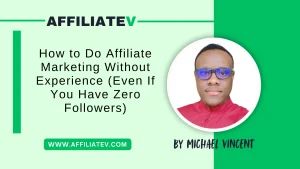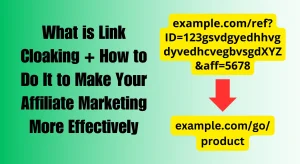
I still remember the first time I tried affiliate marketing. I was excited, convinced I’d cracked the code to easy money. I built a site, picked a few products, and waited. And waited, but nothing happened.
Weeks passed. Barely any clicks, zero commissions. I started doubting myself. Maybe this whole thing was a scam. Maybe I just wasn’t cut out for it.
I was so disappointed and frustrated.
But then, I found out the truth. The top affiliates weren’t just working harder—they were working smarter. They knew things I didn’t. Things they weren’t exactly shouting from the rooftops.
Affiliate marketing looks simple. You promote a product, someone buys through your link, and you get paid. Sounds easy, right? But most people get stuck following the same basic advice: pick a niche, build a site, post content, and hope for sales. That’s why they fail.
The pros? They play by a different set of rules. They use strategies most beginners never hear about. And once I started using them, everything changed. Honestly!
That’s what we’re diving into today: Affiliate marketing tips and tricks that work. Straightforward, practical, and proven strategies that actually work.
I recommend Evergreen Affiliate Marketing if you want to master the strategies top affiliates use to earn for years. This book breaks down the mindset, traffic methods, and automation systems that keep commissions rolling in. It’s worth reading.
Key Takeaways
- Hidden strategies separate top affiliates from beginners.
- Choosing the right niche makes or breaks success.
- Email lists bring long-term profits, not just quick sales.
- SEO, YouTube, and Pinterest drive free traffic for years.
- High-ticket and recurring commissions boost earnings fast.
- Paid ads work but need testing and a budget.
- Trust and value matter more than just spamming links.
- Diversifying traffic sources prevents income drops.
- Automation (like email sequences) makes passive income real.
- Action beats knowledge—test a new strategy today.
Affiliate Marketing Tips and Tricks That Work
Most affiliates struggle because they follow the same advice as everyone else. The real money comes from hidden tricks the pros rarely share. Let’s change that.
The Truth About Affiliate Marketing (What Pros Don’t Tell You)
Affiliate marketing isn’t as easy as some people make it sound. Sure, you can make money, but the competition is brutal. Everyone and their dog is trying to rank, get clicks, and make sales.
The old-school strategies don’t work anymore. Tossing up a basic blog, stuffing it with keywords, and waiting for passive income? That’s a fantasy. The real money comes from strategy, persistence, and adapting to what actually works today.
Big affiliates don’t rely on luck. They build brands, not just websites. They focus on trust, authority, and repeat traffic.
They don’t chase one-off commissions—they create ecosystems where people keep coming back. Email lists, communities, content that actually helps people—that’s where the six-figure earnings come from.
Most beginners burn out because they expect quick wins, but the truth is that it’s a long game. If you’re not ready to learn, test, and pivot, you’ll stay stuck. The ones making serious money are those who treat it like a real business, not a side hustle they hope will take off on its own.
So, forget the hype. Winning in affiliate marketing means putting in the work, staying ahead of trends, and playing smarter than the rest.
Secret Strategies That Set Pro Affiliates Apart
Most affiliates get stuck because they copy what’s already overused instead of finding smarter strategies. Pro affiliates play a different game. They know where the real money is, how to find hidden opportunities, and how to outsmart the competition.
These aren’t your typical tips. These are the strategies top earners don’t talk about.
a). Choosing Profitable Niches (The Smart Way)
Most people say, “Pick a niche you’re passionate about.” That’s bad advice—at least if you want to make real money. Passion is great, but it doesn’t pay the bills, right? Some niches are just too crowded, too cheap, or too hard to monetize.
Pro affiliates think differently. They focus on profitability first, and passion second. If a niche checks the right boxes—high demand, low competition, and solid payouts—you can learn to love it.
Hidden Niche Research Techniques
Forget generic niche lists. Everyone has those. You need hidden gems—markets people overlook. Here’s how to find them:
- Check affiliate networks for high-commission offers. Sites like Impact, ShareASale, and PartnerStack list niche programs most beginners miss.
- Look for pain points, not interests. People spend big money to solve problems. Weight loss, back pain, and legal help pay far more than “fun” hobbies.
- Use Reddit, Quora, and forums. What are people constantly asking for? If they struggle to find answers, that’s an opportunity.
- Spy on under-the-radar competitors. Use tools like SimilarWeb or Ahrefs to see what smaller sites rank for. Big affiliates chase obvious keywords. The gold is in the gaps.
How to Find High-Paying Affiliate Programs
Some niches seem profitable but have terrible payouts. Amazon commissions, for example, are often pennies, (most products offer a commission of between 1- 4.5%). Pro affiliates don’t waste time on low-paying programs. They find big-money offers.
Here’s what to look for:
- Recurring commissions. Software and subscription services (like email marketing tools) pay every month. One sale = passive income.
- High-ticket products. Luxury, B2B, and finance niches have single sales worth $500 or more.
- Private affiliate programs. Many brands have secret deals with better rates than public programs. Always ask.
Affiliate marketing isn’t about working harder—it’s about working smarter. Pros don’t just pick what looks good. They find what pays good.
b). Advanced Traffic Strategies
Most affiliates are stuck on SEO. They treat it like the only way to get traffic. Sure, it works, but it’s slow. You can’t just publish content and hope Google ranks it. You need faster ways to get visitors.
There’s a better approach—one that doesn’t rely on SEO alone. You can pull in traffic from different sources, some of which are completely overlooked. Plus, if you mix in the right paid strategies, you can speed things up and get conversions faster.
I’ll explain further…
How to Drive Organic Traffic Without Relying on SEO Alone
SEO is unpredictable. It can take months to rank, and even then, Google can shake things up overnight. That’s why smart affiliates don’t put all their eggs in one basket. They go where people are already looking for information.
- Pinterest – Most people don’t realize Pinterest is a search engine, not just a place for DIY projects and recipes. Users go there to find solutions. If your niche fits, you can drive serious traffic. The key is to create attention-grabbing pins, use keywords in descriptions, and link back to valuable content. The best part? Unlike social media posts that die in hours, Pinterest content can keep sending traffic for months.
- Medium – Google loves Medium. Why? Because it’s an established platform with high domain authority. If your website is struggling to rank, posting on Medium can help. You can repurpose blog content, add affiliate links (without being spammy), and get eyes on your offers much faster.
- Quora – People go to Quora to ask questions. That means they’re already searching for answers. If you provide a detailed, helpful response with a link to your blog post (or even directly to an offer), you can drive long-term traffic. The best answers stay visible for years, bringing in steady clicks.
- Reddit & Facebook Groups – These platforms are full of communities where people discuss specific topics. But most affiliates screw this up by spamming links. The trick is to actually participate. Comment, help, and become known in the space. Then, when the time is right, drop a link naturally. Done right, this can bring in consistent, engaged traffic.
Paid Traffic Strategies That Actually Convert
Paid traffic sounds easy—just run ads and get clicks, right? Wrong. Most people waste money because they don’t know how to turn those clicks into conversions. If you’re going to spend on ads, you need a plan.
- Facebook & Instagram Ads – These platforms are still powerful, but you can’t just run a random ad and expect sales. Instead of sending people straight to an affiliate link, warm them up first. Create a blog post or landing page that provides value. Then, use retargeting ads to bring those visitors back when they’re ready to buy.
- YouTube Ads – Most affiliates ignore YouTube ads, but they work. Why? Because people on YouTube are already looking for solutions. A short, helpful ad that gives a quick answer and invites them to learn more can drive conversions fast.
- Native Ads – Ever seen those “recommended articles” at the bottom of news websites? That’s native advertising. Platforms like Outbrain and Taboola let you promote your content there. The key is writing curiosity-driven headlines that get people to click. Then, send them to a strong landing page with a clear call to action.
Waiting on SEO is a gamble. Smart affiliates use multiple traffic sources to stay ahead. If you mix organic and paid strategies, you’ll get results faster and more consistently. Waiting for Google to bless your site. Smart affiliates go where the traffic already is. Try these strategies and watch your numbers grow.
c). Email Marketing Hacks Pros Use
Most people treat email like an afterthought. Big mistake. Pros know an engaged list is their most valuable asset. It’s reliable, personal, and drives sales better than any other channel.
Why Email Lists Are a Goldmine
Most affiliates chase social media traffic like it’s the holy grail. Platforms change, algorithms kill reach, and one ban can wipe you out. Email, though? It’s yours. No middleman, no sudden shutdowns.
An email list is like a private ATM. Send an email, make money. Simple. But only if you treat it strategically. Spam them with junk? They’ll ignore you. Build trust? They’ll open, click, and buy—again and again.
Here’s How to Build a Strong Email List for Your Affiliate Marketing Business
Crafting Irresistible Email Sequences
Most affiliates blast random offers. That’s lazy. Smart ones warm up their list with a sequence. Here’s how:
- Hook Them Early – The first email sets the tone. Give value before asking for anything. A killer tip, a freebie, or a quick-win strategy works.
- Story Over Sales Pitch – People ignore salesy emails but love a good story. Share a personal win, a mistake, or an inside secret.
- The Soft Sell – Don’t push the offer too soon. Educate first. Show them why they need it. Let curiosity do the work.
- Urgency That Feels Real – Scarcity works, but don’t fake it. Flash sales, expiring bonuses, or limited spots create real FOMO.
Done right, a sequence warms up cold subscribers and turns them into buyers.
The Secret Email Segmentation Trick That Skyrockets Conversions
One-size-fits-all emails don’t work. People on your list have different needs. The pros know this and use one trick: click-based segmentation.

Here’s how it works. In an email, include two or three links related to different interests. Maybe one for beginners, one for advanced users. When someone clicks, they get tagged automatically.
Now, every email they get is laser-targeted. No more guessing. Just sending people exactly what they want and what they actually subscribed for.
More relevance = more opens, more clicks, more sales. That’s how the top affiliates do it.
Recommended Reading: Email Marketing Explained: How It Works and Why Your Business Needs It
d). Content That Sells Without Being Salesy
Nobody likes a pushy salesman. If your content screams “buy this now,” people will tune out. The trick is to sell without making it feel like selling.
Read Also: How to Add Affiliate Links to Your Blog Naturally Without Sounding Pushy or Salesy
The Psychology Behind High-Converting Content
People don’t buy based on logic alone. They buy based on emotions—then justify it with logic. Good content taps into this. It makes readers feel like they discovered the solution themselves.
Instead of pushing a product, show why it matters. If you’re promoting a fitness tracker, don’t list features. Talk about how it helps someone stay active, sleep better, and feel in control of their health. That’s what makes them hit “buy.”
Another key is providing social proof. People trust what others say more than what you say. Reviews, testimonials, and personal results make content more convincing.
A/B Testing for Maximum Engagement
Do you think you know what works? Test it. Even small adjustments can change how people respond.
Try different headlines. One might get twice the clicks as another. Change your call to action. “Get Yours Today” might convert better than “Buy Now.” Test button colors, images, and even the way you format text.
The point is, don’t guess—let data tell you what works. Keep testing, keep improving.
How Storytelling Increases Affiliate Commissions
Facts tell. Stories sell. A good story pulls people in and makes them care.
Let’s say you’re promoting a budgeting app. You could say, “This app helps you save money.” Or you could tell the story of a single mom who struggled with bills—until this app helped her take control of her finances. Which one do you think sells better?
Of course the one with the story, right?
Stories make products feel real. They create a connection. And when people connect, they buy.
If you want to sell without being salesy then make it about them, not you. Show value, build trust, and let the product sell itself.
e). Using AI & Automation Like a Pro
With AI tools becoming more advanced, integrating them into your affiliate marketing strategy is no longer optional—it’s a smart move.
AI can streamline tasks like content creation, keyword research, and audience targeting, helping you work more efficiently. The right tools save time, improve engagement, and increase earnings, all while automating repetitive tasks so you can focus on strategy and growth.
AI Tools That Work for You
Some AI tools are just hype. Others? Pure gold. You need the ones that do the heavy lifting while you focus on growth.
- Chatbots – They handle customer questions 24/7, keep leads engaged, and even push affiliate offers without sounding like a robot.
- Automated Email Sequences – Set them up once, and they keep selling for you. Welcome emails, follow-ups, and promos—all running while you sleep.
- AI Copywriters – They churn out product descriptions, blog intros, and ad copy fast. Not perfect, but a great starting point.
- SEO Optimization Tools – These help you rank without guessing. They find the right keywords and even tweak content for better results.
Here are 10 Most Powerful SEO Tools Every Affiliate Marketer Needs to Boost Rankings and Earnings
How Chatbots and Emails Boost Passive Income
Let’s say you promote a software tool. Someone visits your site but isn’t ready to buy. A chatbot jumps in, answers questions, and collects their email.
Now, an automated sequence kicks in—first an intro email, then a case study, then a discount. Days later, they buy. All automated.
The key is to make AI work for you, not replace you. Use it to scale, but always add a human touch where it counts.
Read Also: 5 Key Benefits of Using ChatBots in Affiliate Marketing
Mistakes That Kill Your Affiliate Earnings
Most affiliates don’t fail because they pick the wrong niche or promote bad products. They fail because they make avoidable mistakes that crush their earnings before they even get rolling. Let’s go over the biggest ones.
1. Ignoring Affiliate Program Rules
Affiliate programs have strict rules. If you break them, they’ll ban you, and you’ll lose everything—your commissions, your links, and your time.
Common mistakes include:
- Using misleading claims (“This product will make you rich overnight!”).
- Running ads on forbidden platforms (some programs don’t allow Google or Facebook ads).
- Spamming links everywhere.
Always read the terms before promoting. If something isn’t clear, ask the affiliate manager. One dumb mistake can wipe out months of work.
2. Relying on One Traffic Source
If all your traffic comes from one place—Google, TikTok, or Pinterest—you’re asking for trouble. Algorithms change. Accounts get banned. Platforms die.
I’ve seen affiliates go from making thousands a month to zero overnight because their one traffic source dried up.
Spread out. Use SEO, email lists, social media, and even paid ads if it makes sense. The more sources you have, the harder it is to lose everything at once.
3. Promoting Everything Instead of the Right Things
New affiliates often sign up for every program they can find. Bad idea. Promoting random products makes you look like a salesman, not an expert.
People buy from people they trust. If you’re pushing five different VPNs or ten different weight loss supplements, nobody will believe you actually use them.
Stick to products you know, like, or have researched well. Build trust first, commissions second.
4. Forgetting the “Marketing” in Affiliate Marketing
Slapping links on a blog post isn’t marketing. Dropping your code in a YouTube description isn’t marketing.
Good marketing means understanding why people buy. It means writing content that helps, not just sells. It means testing different angles, improving your copy, and tracking what works.
If you’re not learning basic marketing skills—copywriting, SEO, email marketing—you’re leaving money behind. Affiliates who treat it like a real business make real money.
Avoid these mistakes, and you’ll have a huge edge over most affiliates. Play smart, follow the rules, and don’t rely on just one strategy. That’s how you build long-term success.
Scaling Up: Turning Affiliate Marketing Into a Full-Time Income
Making money with affiliate marketing is one thing. Turning it into a full-time business? That’s a different game.
The pros don’t just collect commissions—they build systems, reinvest, and make smart moves most people don’t even think about. Here’s how to do it right.
Reinvesting Profits to Grow Faster
Most affiliates cash out their earnings and spend it. That’s a mistake. The real winners put that money back into their business.
Start with paid traffic. Take a percentage of your profits—maybe 30%—and test ads. Facebook, Google, YouTube, whatever works for your niche. Don’t just throw money at it. Track every click, adjust what’s not working, and scale what is.
Next, build content assets. A strong blog, email list, or YouTube channel keeps money coming in for years. Hire writers, designers, or video editors to speed things up. More quality content = more traffic = more sales.
Lastly, automate what you can. Invest in tools for email marketing, social media scheduling, and analytics. Your time is worth more than doing repetitive tasks all day.
Building a Personal Brand for Long-Term Success
Anyone can push affiliate links. But people buy from those they trust. That’s where personal branding comes in.
Start with a strong online presence. Be everywhere—Twitter, LinkedIn, Instagram, YouTube—wherever your audience hangs out. Share wins, losses, and real experiences. Nobody wants to follow a faceless marketer.
Email lists are gold. Social media algorithms change, but an email list is yours. Give people a reason to sign up—exclusive tips, freebies, or behind-the-scenes insights. Then, actually email them. Not just when you have something to sell.
Your brand should stand for something. Are you the honest reviewer? The discount finder? The expert in your niche? Own that space. People remember personalities, not product pushers.
The Secret Partnerships Pros Use to Multiply Earnings
Here’s something the top affiliates don’t talk about: partnerships. They don’t just promote random products—they work directly with brands, negotiate higher commissions, and even co-create products.
Start by reaching out. If you’re sending consistent sales to a company, email them. Ask for a higher commission, early access to launches, or custom discounts for your audience. Many brands will say yes, but only if you ask.
Next, collaborate with other affiliates. Cross-promote each other’s content, share audience insights, or even bundle offers. Two audiences are better than one.
Another big move is to own a product. Whether it’s an ebook, course, or software, having your own offer lets you control pricing, profits, and branding. Some of the top affiliates make more from their own products than the ones they promote.
Scaling to a full-time income isn’t about luck. It’s about strategy. Reinvest, build your brand, and form the right partnerships. Do that, and affiliate marketing stops being a side hustle—it becomes a real business.
Conclusion
Affiliate marketing isn’t just about promoting links and hoping for commissions. The real pros know the hidden tricks—like picking overlooked niches, stacking commissions, and using email sequences that keep selling long after the click.
Now you do too.
But knowledge alone won’t grow your income. Action will. Try one new strategy today. Optimize an old post. Test a different call to action. Even a small change can unlock bigger results.
Want more insider tips? Join my free email course and also subscribe to my newsletter using the form below. I share what the big players won’t. Just straight-up tactics that work.
Frequently Asked Questions
What’s the fastest way to make money with affiliate marketing?
There’s no magic button, but some methods work faster than others. Paid ads let you drive instant traffic, but they require testing and a budget. High-ticket offers ($500+ commissions) can bring in bigger payouts with fewer sales. However, both methods need strategy—you can’t just throw links out and expect results. If you want something sustainable, focus on organic traffic through SEO, social media, or YouTube while using paid ads to scale later.
Why do most beginners fail in affiliate marketing?
Most people fail because they expect overnight results. They choose broad, competitive niches, copy what everyone else is doing, and give up when they don’t see quick wins. Successful affiliates take the time to learn, test, and tweak their approach. They build trust, provide value, and stay consistent. If you treat affiliate marketing like a real business—not a get-rich-quick scheme—you’re already ahead of most beginners.
How do I drive free traffic to my affiliate links?
SEO is one of the best long-term traffic sources. Write blog posts that rank on Google and bring in consistent visitors. Pinterest works well for niche topics like fitness, personal finance, and DIY. YouTube lets you build authority and drive clicks through video content. Social media (TikTok, Instagram, Twitter) can generate fast engagement, but you’ll need to post consistently. The key? Pick one platform, master it, and scale from there. Find out more here.
Do I need a website to succeed in affiliate marketing?
No, but it makes things easier. A website gives you control over your content, builds long-term authority, and helps with SEO. However, some affiliates make great money using only YouTube, TikTok, or email marketing. If you hate writing or don’t want to manage a site, focus on video content or build an audience on a social platform. Just make sure you’re collecting emails so you don’t lose your audience if an algorithm changes.
How do top affiliates make six or seven figures?
They don’t rely on one traffic source or a single offer. They diversify. They build email lists so they’re not at the mercy of changing algorithms. They use automation—like email sequences—to make sales while they sleep. Many scale with paid ads once they find a winning offer. And they focus on lifetime commissions, recurring revenue, and high-ticket products. The difference between an average affiliate and a six-figure one? Strategy and consistency.






